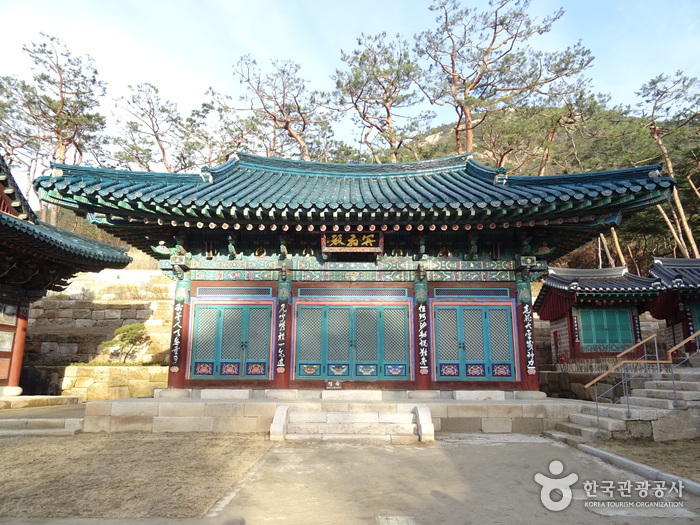Welcome to Jingwansa Temple!
Located to the west of Seoul, Jingwansa Temple is a historic and cultural treasure that has been enchanting visitors for centuries. As one of the four major temples around Seoul, it holds a special place in the hearts of locals and tourists alike. Let us take you on a journey to explore the rich history, stunning architecture, and serene nature surrounding this remarkable destination.
A Glimpse into History
Step back in time as you discover the origins of Jingwansa Temple. Established in 1010 BC during the Goryeo dynasty, the temple was dedicated to Preceptor Jingwan by King Hyeonjong. During the Joseon dynasty, King Sejong constructed a library within the temple premises, creating a space for Confucian scholars to study and engage in intellectual pursuits. Sadly, the temple was reduced to ashes during the Korean War, but thanks to the leadership of Head Monk Jingwan, it was painstakingly restored and renewed over a period of 30 years.
Awe-Inspiring Architecture
As you explore the temple grounds, you’ll be mesmerized by the splendid architecture that showcases the skill and artistry of ancient craftsmen. The temple complex features various halls, including the magnificent Daeungjeon (Hall of Sakyamuni), Myeongbujeon (Hall of Judgment), Nahanjeon, Chilseonggak, Nagawon, Hongjeru, Dongjeonggak, Dongbyeoldang, Yosache, and others. The Daeungjeon, in particular, is the centerpiece of the temple and houses the main statue of Buddha along with other revered figures. Each hall is a testament to the devotion and reverence for Buddhism that is deeply ingrained in Korean culture.
A Place of Tranquility
Jingwansa Temple not only offers a glimpse into the past but also provides a peaceful sanctuary away from the hustle and bustle of city life. Nestled in the breathtaking surroundings of Bukhansan National Park, the temple immerses you in nature’s beauty. Whether you desire a moment of quiet reflection or a leisurely walk amidst lush greenery, this serene setting will soothe your soul. Take the opportunity to learn about Buddhist teachings, meditate, or simply find solace in the tranquility of this sacred place.
Getting to Jingwansa Temple
If you’re wondering how to reach Jingwansa Temple, fear not! It is easily accessible via public transportation. Simply take the Seoul Subway Line 3 and alight at Gupabal Station. From there, head to Exit 3 and catch Bus No. 7724. After a short ride, you’ll arrive at the Jingwansa Temple Bus Stop, ready to embark on your cultural adventure.
So why wait? Immerse yourself in the rich history, captivating architecture, and serene surroundings of Jingwansa Temple. Discover the essence of Korean heritage and find tranquility in the heart of nature. Welcome to a truly enriching experience!

